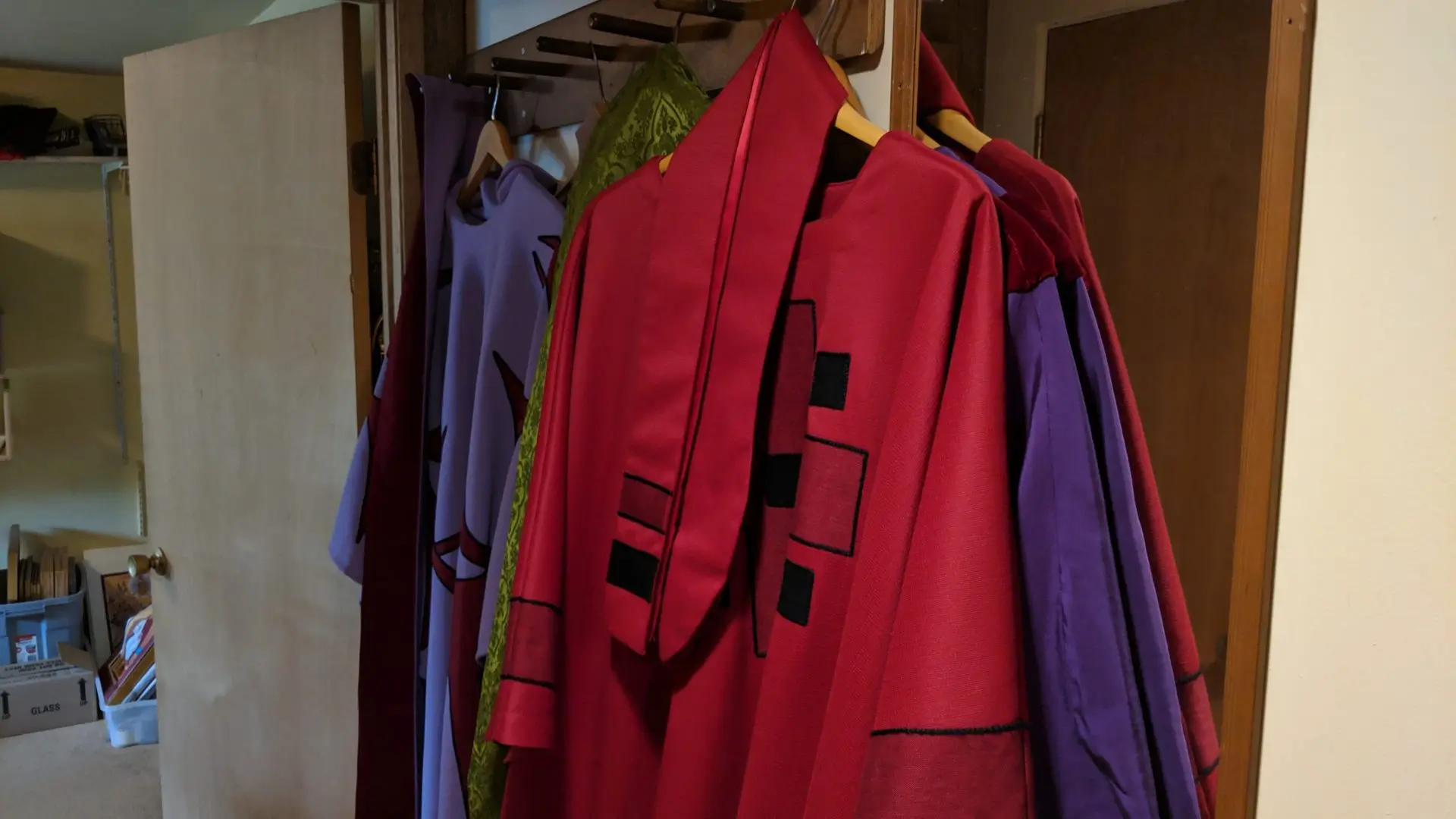From early times Christians have observed Holy Week, the week before Easter, as a time of special devotion. As the pilgrim Egeria recorded in the late fourth century, Jerusalem contained many sacred places that were sites for devotion and liturgy. Numerous pilgrims to the holy city followed the path of Jesus in his last days. They formed processions, worshipped where Christ suffered and died, and venerated relics.
From this beginning evolved the rites we observe today on Palm Sunday, Maundy Thursday, Good Friday, and Holy Saturday. These services provide a liturgical experience of the last days of Jesus’ earthly life, as well as the time and events leading up to his resurrection.
The three holy days, or Triduum, of Maundy Thursday, Good Friday, and Holy Saturday are at the heart of the observance. Holy Week ends at sundown on the Saturday before Easter, or with the celebration of the Easter Vigil.
(Taken from Holy Week.)
All are welcome at Redeemer.
- All races.
- All religions.
- All countries of origin.
- All sexual orientations.
- All genders.
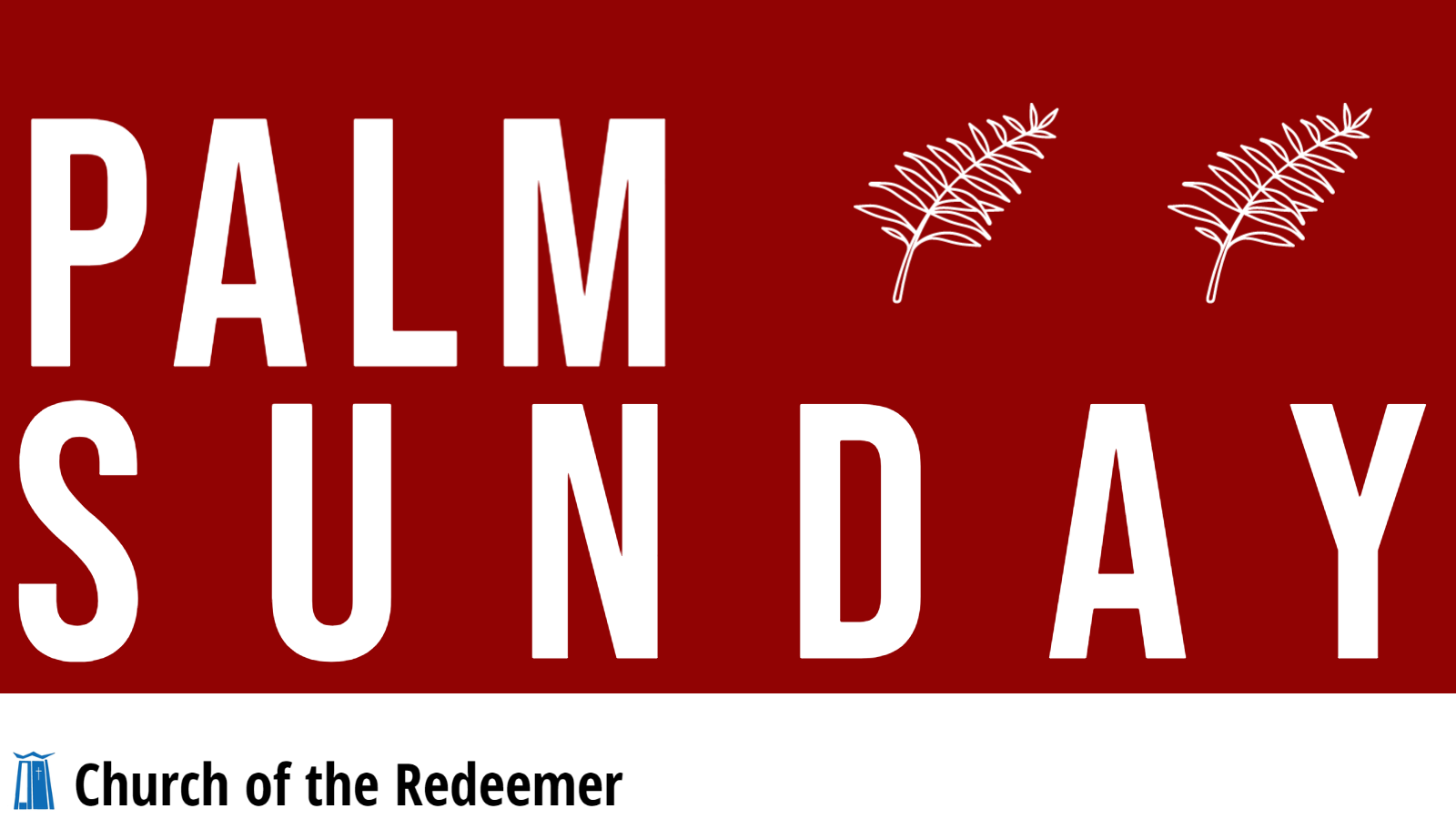
The Sunday of the Passion: Palm Sunday
- April 13, 2025
Palm Sunday is the Sunday before Easter at which Jesus’ triumphal entry into Jerusalem (Matthew 21:1-11, Mark 11:1-11a, Luke 19:29-40) and Jesus’ Passion on the cross (Mathew 26:36-27:66, Mark 14:32-15:47, Luke 22:39-23:56) are recalled. It is also known as the Sunday of the Passion.
Palm Sunday is the first day of Holy Week. Red is the liturgical color for the day.
The observance of Palm Sunday in Jerusalem was witnessed by the pilgrim Egeria in about 381-384. During this observance there was a procession of people down the Mount of Olives into Jerusalem. The people waved branches of palms or olive trees as they walked. They sang psalms, including Psalm 118, and shouted the antiphon (refrain), “Blessed is he who comes in the name of the Lord!” The Palm Sunday observance was generally accepted throughout the church by the twelfth century.
The liturgy of the palms is the entrance rite for the service. The congregation may gather at a place apart from the church and process to the church after the blessing of the branches of palm or other trees (Book of Common Prayer, p. 270). The liturgy of the palms includes a reading of one of the gospel accounts of Jesus’ entrance into Jerusalem. After the entrance rite, the service changes focus abruptly from the triumphal entry into Jerusalem to the solemnity of the Passion.
- 8:00 am, In-person Palm Sunday and Passion liturgy with Eucharist (simpler service without music)
- 10:30 am, In-person and on-line Palm Sunday and Passion liturgy with Eucharist (full service with music)

Wednesday in Holy Week: Spy Wednesday
- April 16, 2026
Holy Wednesday commemorates the Bargain of Judas as a clandestine spy among the disciples. It is also called Spy Wednesday, or Good Wednesday, and Great and Holy Wednesday.
- 12:00 noon, In-person Spy Wednesday Holy Eucharist

Maundy Thursday
- April 17, 2025
The Thursday in Holy Week is called Maundy Thursday. It is part of the Triduum, or three holy days before Easter. The name comes from the Latin phrase mandatum novum, “new commandment,” taken from John 13:34. The ceremony of washing feet was also referred to as “the Maundy.” Maundy Thursday celebrations also commemorate the institution of the eucharist by Jesus “on the night he was betrayed.”
The washing of feet was a menial act of hospitality in the Hebrew Scriptures (see Genesis 18:4, 19:2). It was often performed for guests by a servant or the wife of the host.
The Gospel of John (13:1-17) records that Jesus washed the feet of the disciples at the Last Supper. Jesus urged the disciples to follow his example of generous and humble service. They should wash one another’s feet, as their feet had been washed by Jesus, their Lord and Teacher.
Jesus’ washing of the disciples’ feet was a lived expression of his teaching that “whoever wishes to be first among you must be slave of all” (Mark 10:43-44). The foot-washing also expressed Jesus’ “new commandment” for his disciples to love one another, as he had loved them (John 13:34). The washing of feet continued in the early Christian church. The requirements for enrollment on the list of widows includes the expectation that a widow would have “washed the saints’ feet” (1 Timothy 4:9-10). The ceremonial washing of feet is mentioned by Augustine of Hippo (354-430).
- 12:00 pm, In-person Maundy Thursday Holy Eucharist with foot washing (simpler service without music)
- 7:00 pm, In-person and on-line Maundy Thursday Holy Eucharist with foot washing (service with music)
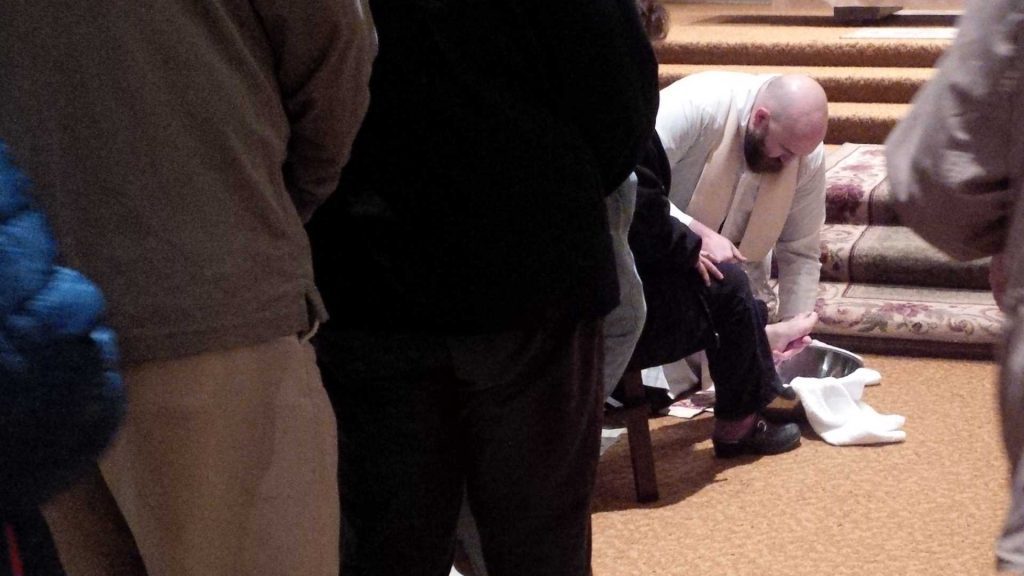

Gethsemane Vigil Watch
- April 17, 2025
“Could you not watch with me for one hour?” Jesus asked this question to the disciples while he was praying in the Garden of Gethsemane the night before the Crucifixion.
We have a chance to answer that question in our own day by watching with Jesus on the altar of repose during our Gethsemane Vigil Watch. This follows the evening Maundy Thursday service at Episcopal Church of the Redeemer in Kenmore, Washington. We invite you to spend time in prayer at the altar of repose in a holy hour watch.
Can you watch with Jesus for one hour?
- 8:30 pm to 12:00 midnight, Gethsemane Vigil Watch
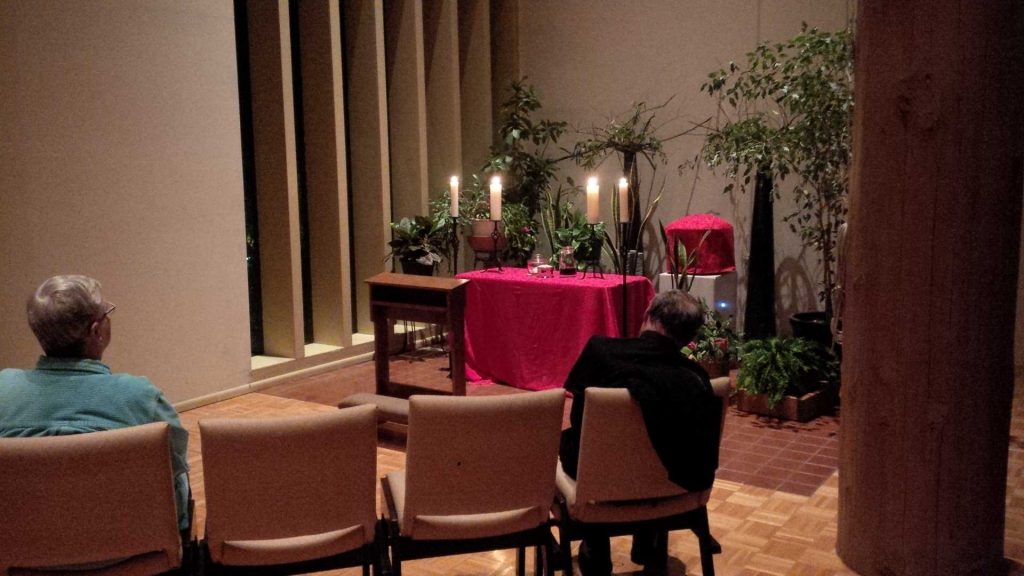
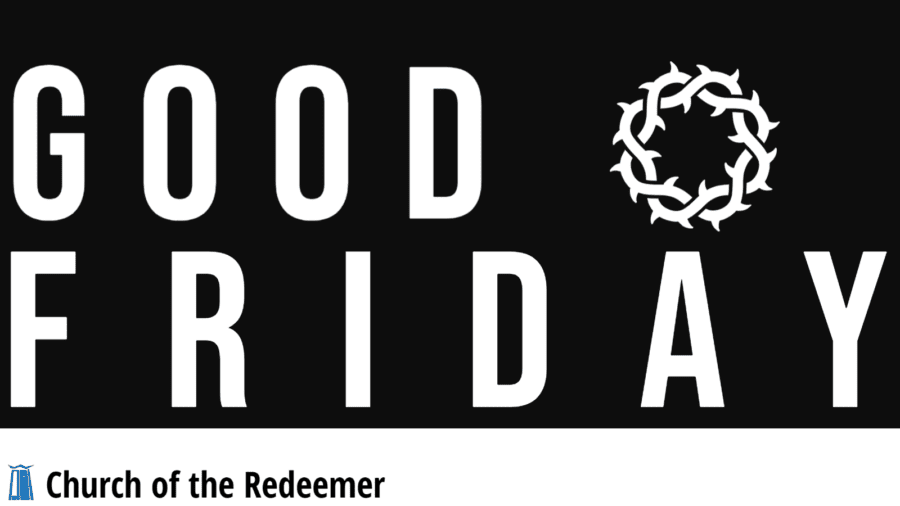
Good Friday
- April 18, 2025
Good Friday is the Friday before Easter Day, on which the church commemorates the crucifixion of Jesus. It is a day of fasting and special acts of discipline and self-denial.
In the early church candidates for baptism, joined by others, fasted for a day or two before the Paschal feast. In the west the first of those days eventually acquired the character of historical reenactment of the passion and death of Christ.
The liturgy of the day includes John’s account of the Passion gospel, a solemn form of intercession known as the solemn collects (dating from ancient Rome), and optional devotions before the cross (commonly known as the veneration of the cross).
- 12:00 noon to 1:00 pm, In-person Good Friday liturgy (simpler service without music)
- 7:00 pm to 8:30 pm, In-person and on-line Good Friday liturgy (service with music)


Holy Saturday
- April 19, 2025
Holy Saturday is the Saturday after Good Friday, which recalls the day when the crucified Christ visited among the dead while his body lay in the tomb of Joseph of Arimathea.
In the Episcopal Church there is no eucharist on Holy Saturday. The Book of Common Prayer provides a simple liturgy of the word with collect and readings for the Holy Saturday service. The funeral anthem “In the midst of life” (Book of Common Prayer, pp. 484 or 492) is used instead of the prayers of the people (Book of Common Prayer, p. 283).
In the midst of life we are in death;
from whom can we seek help?
From you alone, O Lord,
who by our sins are justly angered.Holy God, Holy and Mighty,
Holy and merciful Savior,
deliver us not into the bitterness of eternal death.Lord, you know the secrets of our hearts;
shut not your ears to our prayers,
but spare us, O Lord.Holy God, Holy and Mighty,
Holy and merciful Savior,
deliver us not into the bitterness of eternal death.O worthy and eternal Judge,
do not let the pains of death
turn us away from you at our last hour.Holy God, Holy and Mighty,
Holy and merciful Savior,
deliver us not into the bitterness of eternal death.
In the ancient church, those preparing for baptism and perhaps others continued the fast they began on Good Friday. Holy Saturday ends at sunset. Fasting and other preparations end at sunset or with the Easter Vigil, which begins the celebration of Easter.
- 9:30 am to 10:00 am, In-person Holy Saturday service
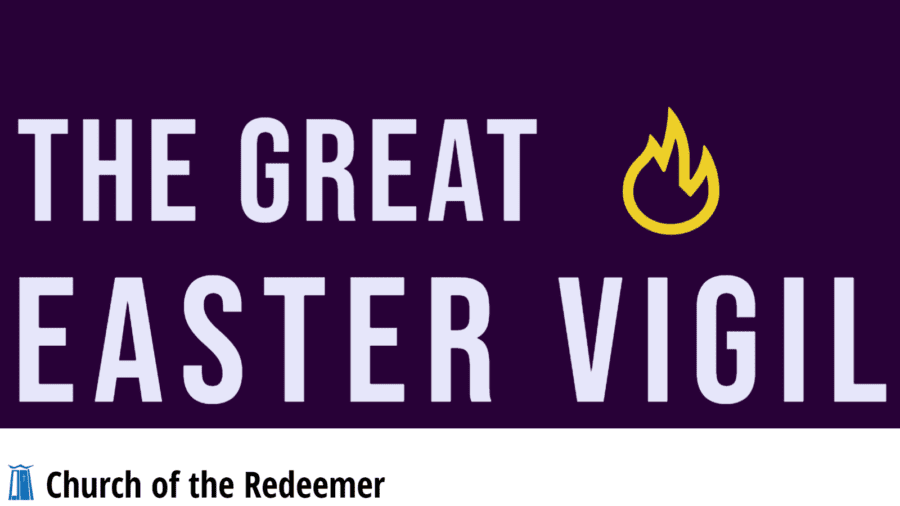
The Great Vigil of Easter
The Easter Vigil is intended as the first (and arguably, the primary) celebration of Easter in the Book of Common Prayer (pp. 284-95). It is also known as the Great Vigil.
The service begins in darkness, sometime between sunset on Holy Saturday and sunrise on Easter, and consists of four parts:
- The Service of Light with the kindling of new fire, lighting the Paschal candle, and the Exsultet
- The Service of Lessons with readings from the Hebrew Scriptures interspersed with psalms, canticles, and prayers
- Christian Initiation (Holy Baptism) or the Renewal of Baptismal Vows
- The Eucharist
Through this liturgy, the Book of Common Prayer recovers an ancient practice of keeping the Easter feast. Believers would gather in the hours of darkness to hear scripture and offer prayer ending at dawn on Easter. This night-long service of prayerful watching anticipated the baptisms that would come at first light and the Easter Eucharist.
Easter was the primary baptismal occasion for the early church to the practical exclusion of all others. This practice linked the meanings of Christ’s dying and rising to the understanding of baptism.
- 9:00 pm to 11:30 pm, In-person and on-line Great Vigil of Easter

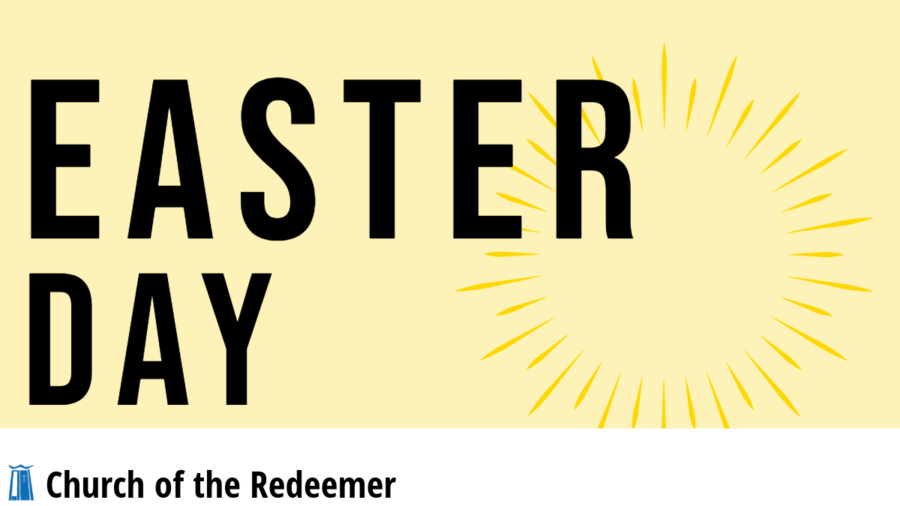
The Sunday of the Resurrection, or Easter Day
- April 20, 2025
Easter Day is the annual feast of the resurrection, the Pascha or Christian Passover, and the eighth day of cosmic creation. Faith in Jesus’ resurrection on the Sunday or third day following his crucifixion is at the heart of Christian belief.
In the western church, Easter occurs on the first Sunday after the full moon on or after the vernal equinox. Easter always falls between March 22 and April 25 inclusive. Following Jewish custom, the feast begins at sunset on Easter Eve with the Great Vigil of Easter.
The Eastern Orthodox Church celebrates Easter on the first Sunday after the Jewish Pesach or Passover (which follows the spring full moon). Although the two dates sometimes coincide, the eastern date is often one or more weeks later.
The Easter Season, or the Great Fifty Days, lasts from Easter Day through the feast of Pentecost seven weeks later.
- 8:00 am, In-person Holy Eucharist on Easter Day (simpler service without music)
- 10:30 am, In-person and on-line Holy Eucharist on Easter Day (service with music)
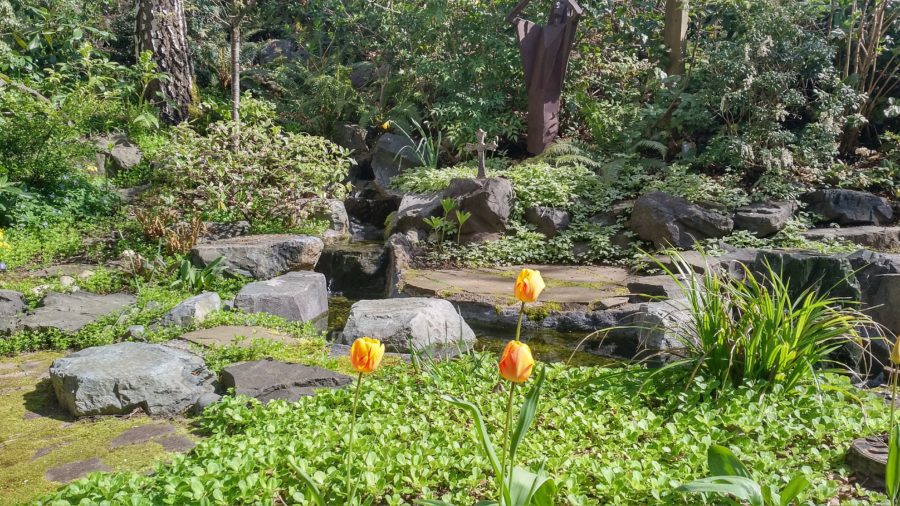

Easter Day Brunch
- April 20, 2025
Are you are planning to attend either the 8:00 am or 10:30 am worship services on Easter Day at Episcopal Church of the Redeemer? If so, we invite you to attend the Easter Day brunch in the church’s parish hall. It is a potluck meal.
- Welcome our visitors coming to one of our services this morning.
- Greet your friends that regularly attend the “other” service.
- Enjoy a second cup of coffee.
We ask that you bring breakfast items to share.
So that we know how many chairs and tables to set up, please register for a free ticket for each person who is coming.
- 9:15 to 10:15 am, Easter Day Brunch
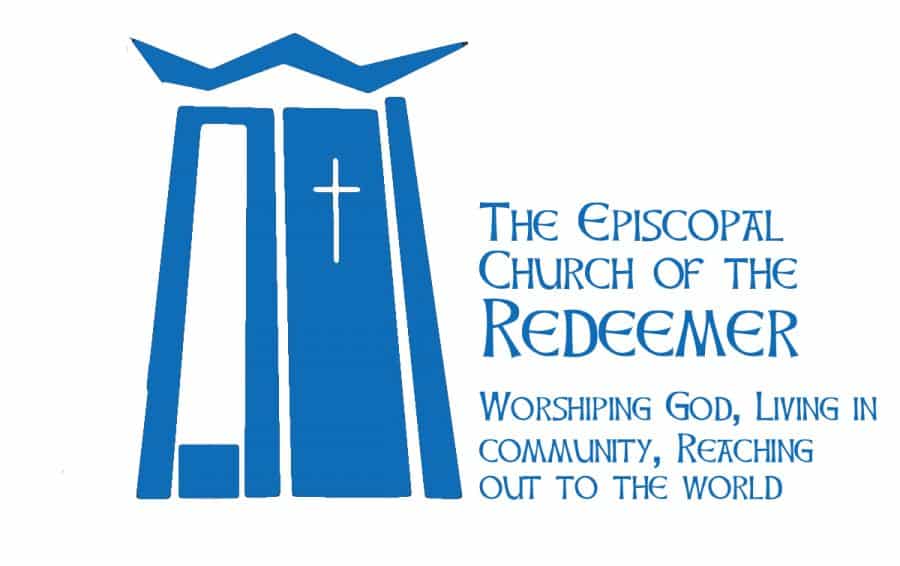
Church of the Redeemer
Church of the Redeemer: Worshiping God, living in community, and reaching out to the world around us. We are an Episcopal Church serving north King County and south Snohomish County, Washington. As you travel your road, go with friends walking the way of Jesus at Redeemer.
Church of the Redeemer is at 6210 Northeast 181st Street in Kenmore, Washington. The campus is a short distance north of Bothell Way, near the Burke-Gilman Trail. The entrance looks like a gravel driveway. The campus is larger on the inside than it is on the outside. And we managed to hide a large building on the side of a hill that is not easily seen from the street.
The Episcopal Church welcomes you.

